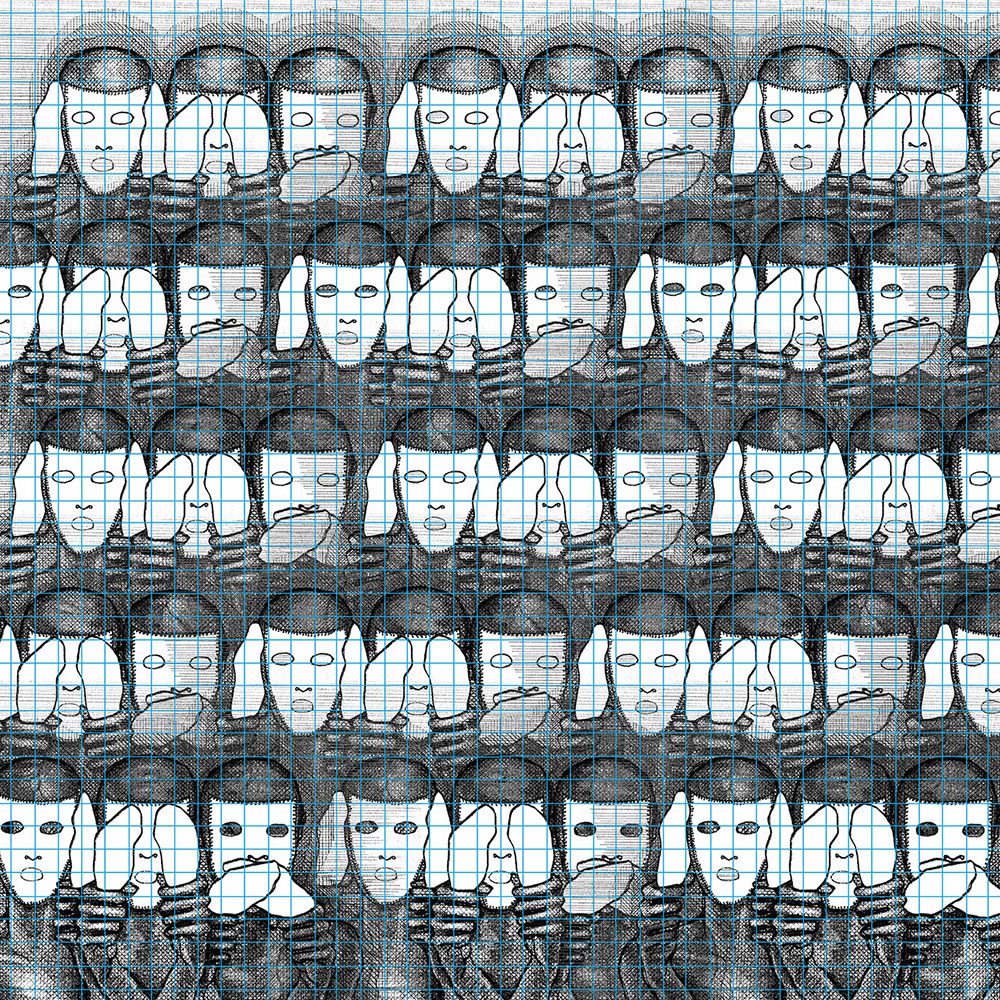ART CITIES:Frankfurt-Adrian Piper
 Adrian Piper is Conceptual artist and analytic philosopher. Since the 1960s, her work across mediums has drawn from her personal and professional experiences to consider the nature of subjectivity, agency, and identity in metaphysical, social, and political contexts. Inspired by her friend Sol LeWitt, the artist developed a conceptual framework for drawings and geometric sculpture before turning to performance, exploring its potential to challenge our understanding of social structures, gender, and race.
Adrian Piper is Conceptual artist and analytic philosopher. Since the 1960s, her work across mediums has drawn from her personal and professional experiences to consider the nature of subjectivity, agency, and identity in metaphysical, social, and political contexts. Inspired by her friend Sol LeWitt, the artist developed a conceptual framework for drawings and geometric sculpture before turning to performance, exploring its potential to challenge our understanding of social structures, gender, and race.
By Efi Michalarou
Photo: Portikus Archive
“Who, Me?: is Adrian Piper’s first institutional solo exhibition in Frankfurt. For more than five decades, Adrian Piper has held a unique place in both the world of contemporary art and academia as an artist and analytical philosopher. Like hardly any other figure of our time, she has expanded the spectrum of conceptual art and minimalism as a tool for self-examination and social critique, thus significantly influencing successive generations. Throughout her career, Piper has explored a wide range of media, including collage, drawing, installation, performance, photography, sound, and video. Rather than relying on predetermined interpretations, her practice creates spaces in which viewers are confronted with their own assumptions and prejudices, thereby calling for social, personal, and collective transformations. For her exhibition “Who, Me?” at Portikus, the artist has conceived two new site-specific works that draw on her ongoing exploration of the conditions of self-awareness. In the main gallery, “I’m the Tree” (2024) transforms the space into a sculptural installation. Responding to the architecture of the building, which usually allows for an immediate interaction with the artworks on display, Piper deliberately altered the access to the space by creating a wall that obstructs both passage and view. Only upon ascending the stairs leading to the mezzanine will the visitors be able to see a suspended dead tree held by steel wire anchored to the four top and bottom corners of the gallery and hovering above a floor entirely clad in mirrors. A walkway that extends the mezzanine around the periphery of the room (including a small ascending and descending stairway at one corner to surmount an immovable architectural barrier), elevated four meters above the ground, allows viewers to move around the installation and observe the interplay between the reflection of the tree, the gallery’s architecture, and themselves. Instead of defining the layered meanings of the work, which Piper admits sometimes take years to fully understand, it is the title—as so often—that points to the concern at hand: the question of the self. This is further brought to light in “ the Screen” (2024), presented in the downstairs gallery, where the entire wall surfaces have been covered in mirror panels. The installation consists of four rows of five backed chairs, facing both a screen on which an empty white square of light is projected and a podium equipped with a reading lamp. With no speaker at the podium and no slides to view, we are met with the confluence of our mirrored image, the elements arranged in space, and the reflection of the Main River, whose flowing waters seem to enter through the windows. Much like the intentionally unresolved state of suspense in I’m the Tree, Piper invites viewers to ponder their own presence within the intricate layers that shape our experiences of self, others, and the here and now. Building on previous works by the artist, in which she addresses or directly engages viewers, our reactions become integral to the experience of her exhibition at Portikus. According to philosopher Immanuel Kant’s “Critique of Pure Reason” (1781), a work central to Piper’s artistic as well as scholarly practice, the self is a transcendental condition that we can’t observe or know in the same way as an object. Instead, it functions as a precondition for experience itself, a unifying force that enables us to connect various representations into a subjective grasp of reality. In the exhibition the mirrored environments do not reveal an ‘objectified’ self; rather, the installations encourage a deeper reflection on the relationship between self-cognition and external conditions. The title of the exhibition plays on the familiar expression often used to feign innocence or deflect blame, prompting viewers to confront their own role and responsibility in issues from which they might seek to distance themselves.
Photo: Adrian Piper, Just Who The Hell Do You Think You Are?, (detail). Number 3 of 7. From “Artist’s Project,” Artforum, 54, 10 (Summer 2016): 330-337. © Adrian Piper Research Archive (APRA) Foundation Berlin
Info: Curators: Liberty Adrien & Carina Bukuts, Portikus, Alte Brücke 2 / Maininsel, Frankfurt am Main, Germany, Duration: 23/11/2024-9/2/2025, Days & Hours: Tue-Fri 12:00-19:00, Sat-sun 11:00-19:00, www.portikus.de/
